I was looking at the face of a barely-conscious, half-drowned teenage bird, wondering, "If I'm going to do a rescue breath, do I try to put my mouth over the entire beak, including the nose holes, or should I try to plug the little nose with my fingers and breathe just into the mouth?" How does this even work?
I've taken a few CPR classes, but they were all aimed at rescuing humans.
My commitment to urban farming gets tested in these moments. Do I love doing this at a "try to do CPR on a bird" level? That's commitment.
Urban farming is fun when everything is going according to plan, but what about when a juvenile suicidal Guinea fowl jumps in the water bucket and tries to die? What do you do?
I took my first CPR training in middle school to get an edge in the cutthroat neighborhood babysitting pool. All the preteen girls reading "The Babysitters Club" became childcare entrepreneurs around the same time. I needed a hook to stand out in a crowded labor market - enter the Red Cross training.
I remember learning the "A, B, Cs" - a reminder first to check the Airway, then confirm if the person is Breathing, before moving on to check the Circulation (apparently that's now out, and the correct moniker is "CAB" instead, but you get the idea.)
I also remember that we're supposed to do chest compressions and breaths to the beat of "Stayin' Alive" by the BeeGees. That's a hard one to forget. Even if I can't remember the PIN to my ATM card, if you're in cardiac arrest, I'll be your BeeGees-singing chest-thumper.
But this is a little farm, and those who need saving here aren’t always human. So earlier this week, I knew I was in totally different life-saving territory after I fished our young Guinea fowl out of the water. Our Guineas are probably the dumbest birds in the barnyard, and they make the chickens look like Nobel Laureates, which is saying something.
Guineas are extremely loud, screechy, suicidal, fearless, spotted chicken/turkey-hybrid-looking psychos. We love them.
They fall into the "you either love them or absolutely hate them" category. Those who think Guineas are fantastic can't imagine life without them, and those who think they're terrible can't imagine why anyone would ever add them to the flock.
I watch them march like little soldiers across the pasture in a militaristic line. Guineas will hunt and kill bugs, snakes, and anything else they deem a threat or food. Their almost robotic approach to life is part of the charm, but their programmer didn't seem to include much fear of death or rational risk analysis when making them.
Despite being known for their call, Guineas are usually quiet birds until they see something or someone out of the ordinary. As soon as they sense a disturbance, their screech is terrifying. I assume because they're so dumb, their call developed to scare off predators and protect the others while acting as a sacrificial lamb.
As someone who has heard a coyote eat one of her Guineas, I can assure you they don't die quietly. All the others got away.
We have had Guineas for several years, and our original girls are getting older. So, a few months ago, I ordered a mix of Guinea chicks (called keets) in the mail to replace and grow our flock. Like every animal, they're extra dumb as teenagers, the age ours are right now.
In addition to the feeding and watering chores we do for the older Guineas, the younger ones require we constantly check on them. They do their best to get eaten, drown, choke, trap themselves in a corner, or die for no reason. Also, if not properly trained to their "home" for at least eight to ten weeks, younger Guineas will run away, and you'll never catch them. Ever.
Once they know you, where they live, and mostly how to not die, though, they are expert hunting alarm systems. You don't need a guard dog with Guineas around.
But our new crop of Guineas brought me to one of those urban farming precipice moments: to CPR or not to CPR. And if so, how?
During a quick break from zoom calls, I looked outside to see our only beautiful snow-white guinea bobbing in the water bucket. A few more minutes and I would have been too late. I fished her out, and she gasped for air, her tiny beak opening and closing like she was still drowning. Crap.
I sprung into action, flipping her over and squeezing all the water I could get out of her mouth, throat, and lungs. I wrung her out like a wet kitchen cloth. She was still gasping like she was choking. Now came the moment of truth . . . how, exactly, would I give this little bird mouth-to-mouth?
It was a gamble, but since she was too small for me to cover her little nostrils with my fingers and still get my mouth over her beak, I put my whole mouth over her lower face and blew. I felt her body inflate like a little balloon.
I did it again. She inflated again. She stopped opening and closing her beak like she was choking and started breathing on her own, if shallowly.
I took her inside, wrapped her in a towel, and carefully placed the whole bird burrito under a heat lamp. She kept hanging on. Next, I went into the bathroom and mouthwashed - a lot.
After a few hours, she was good as new. As dumb as she is, I'm sure she had already forgotten her near-death experience as I watched her fearlessly go right back to the water bucket for a sip.
Just in case, there are several articles about how to perform CPR on birds. But, let's be honest, unless you're a weirdo like me, you probably won't need them.
How do you give a bird mouth-to-mouth? Very carefully.

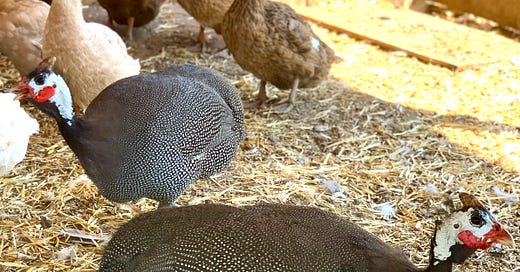


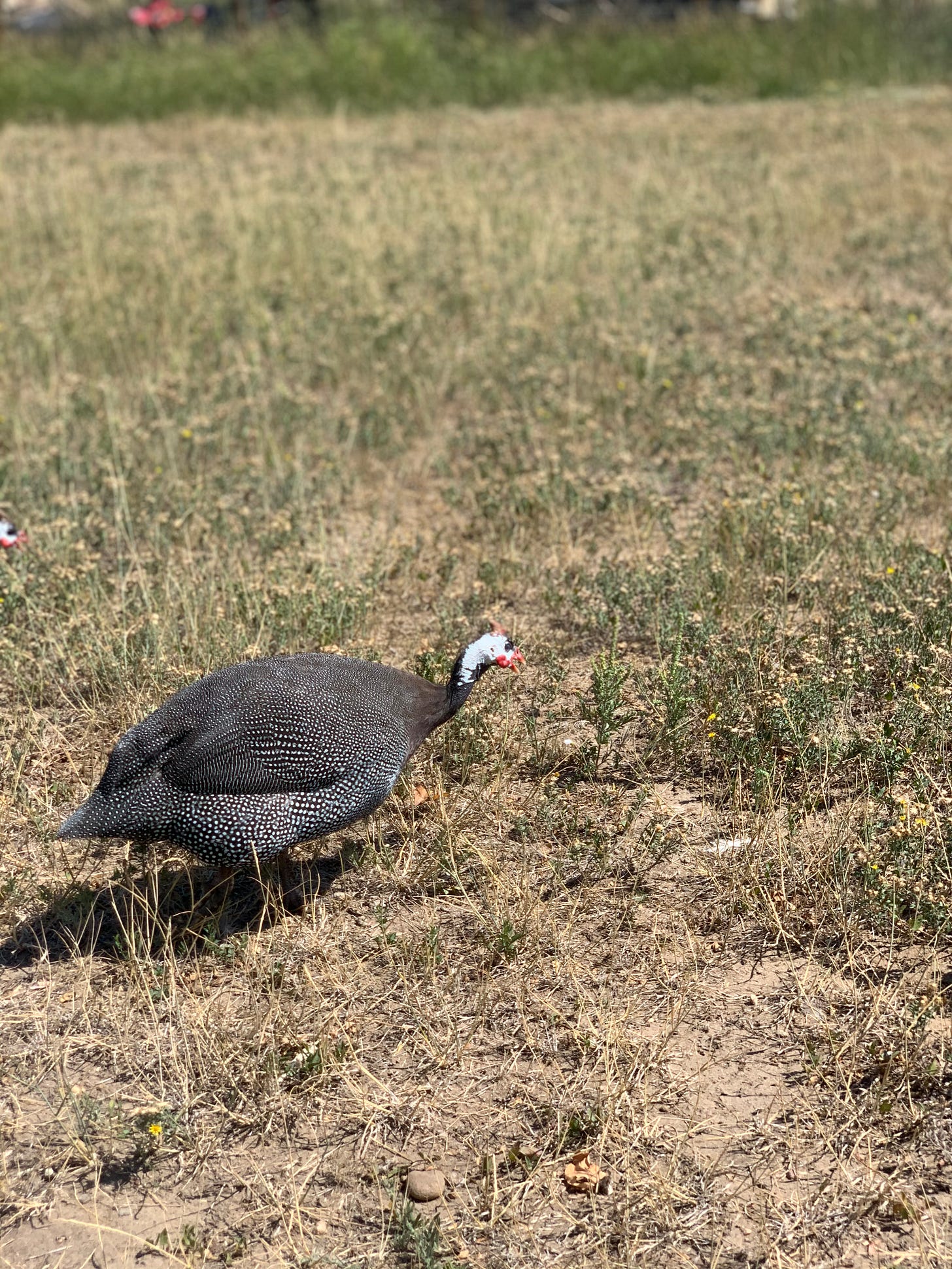
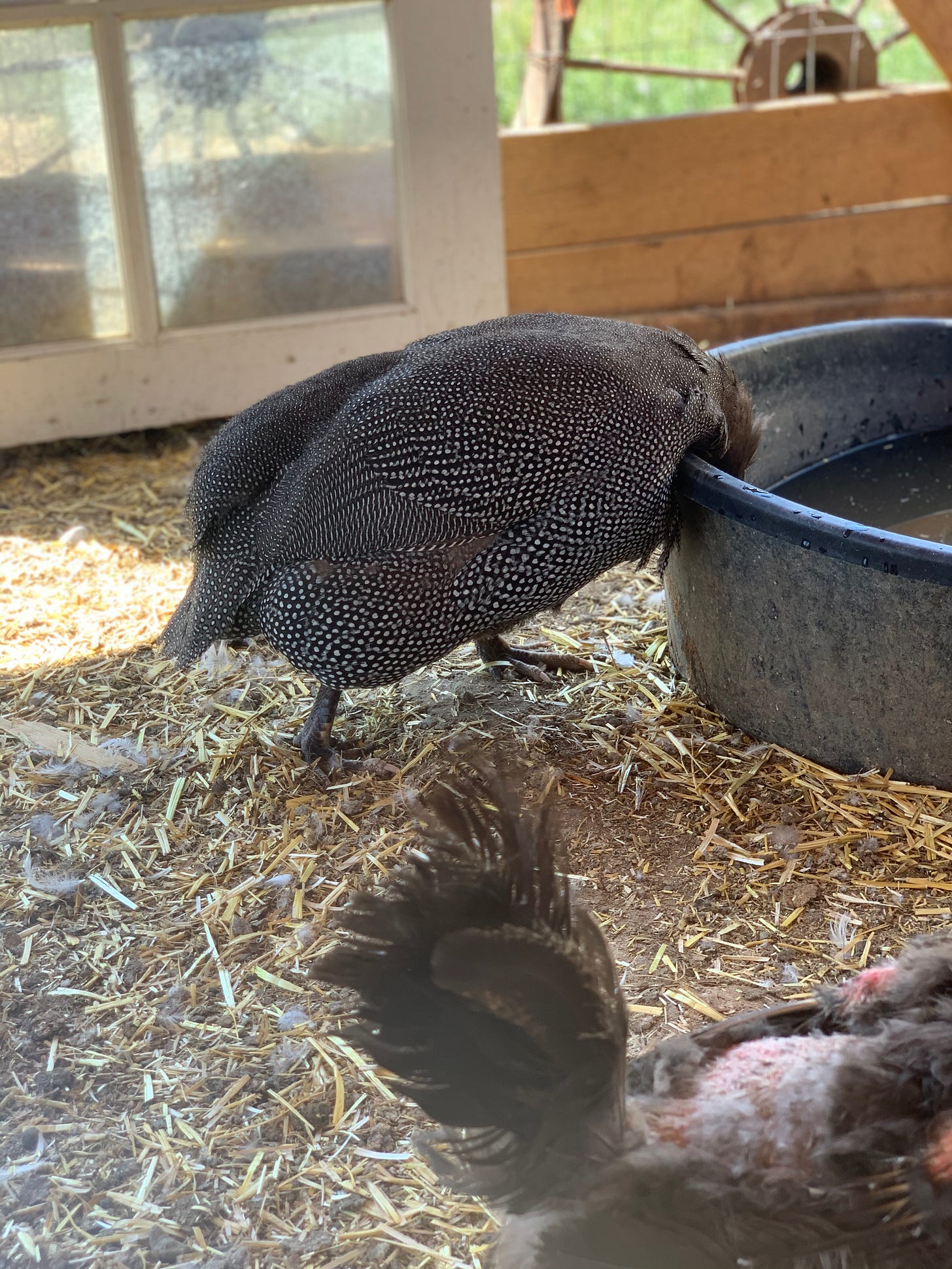
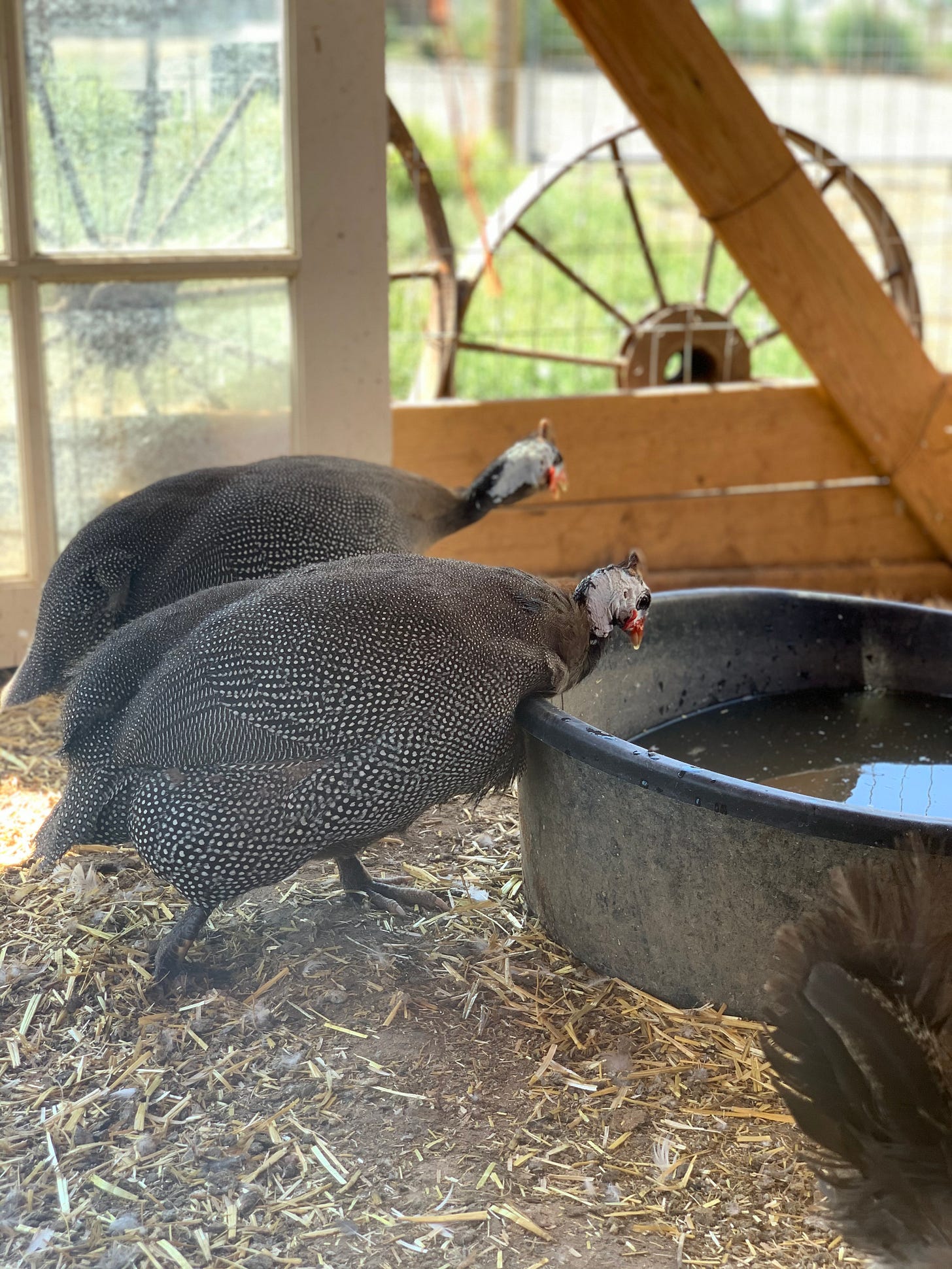
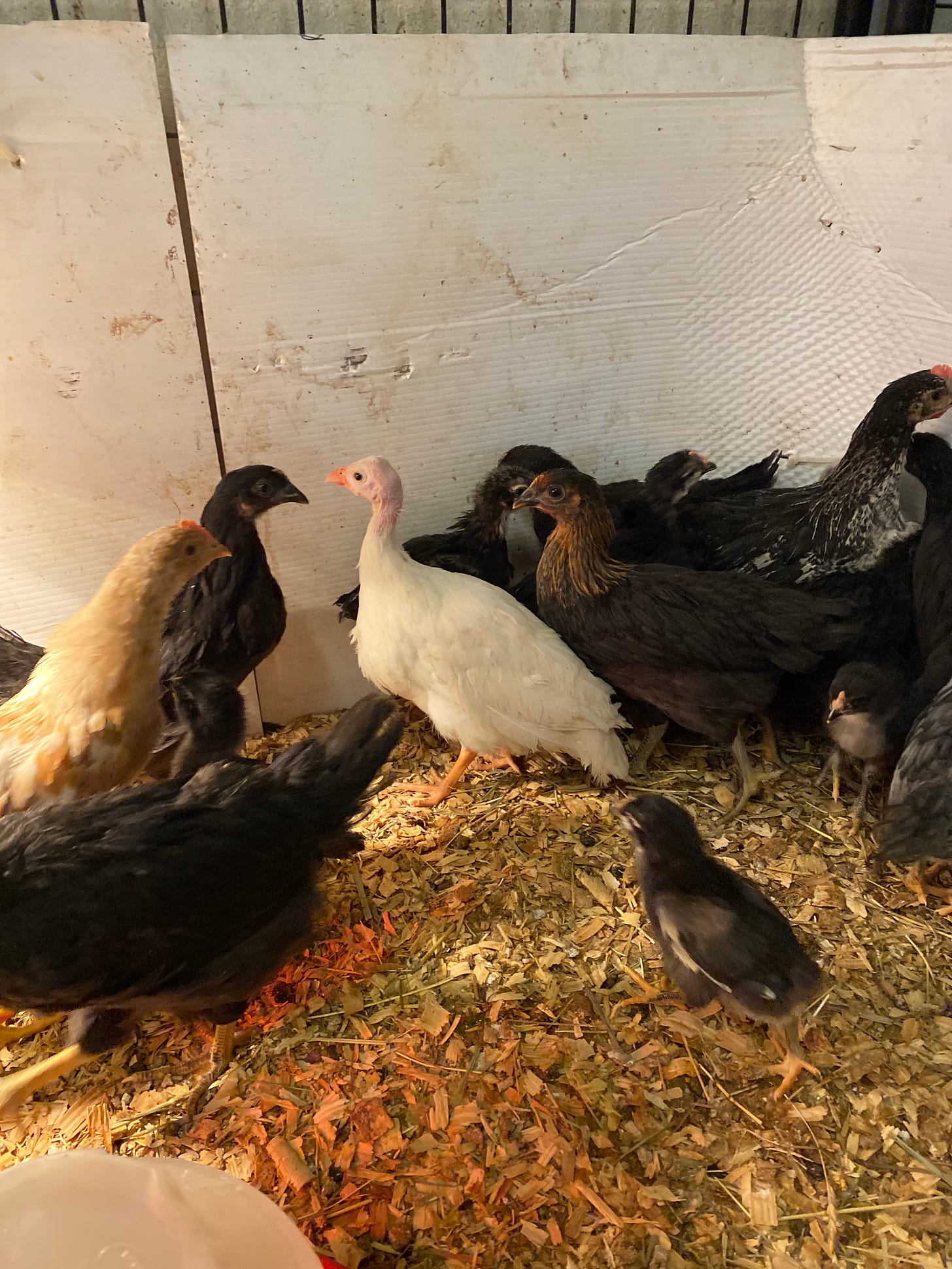

I love this story! its' great to see how seriously you take this farm - it isn't a hobby, its the real thing. Also, fun to read about things I'll never do. - like mouth to mouth for a bird.
A wonderful break from election doom-scrolling. Especially since it ends happily. Thanks!